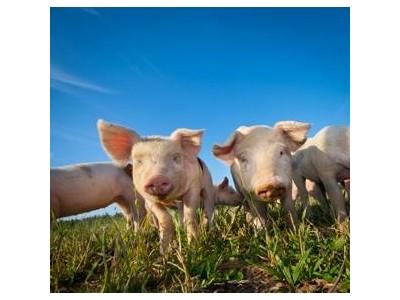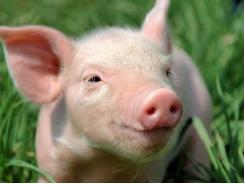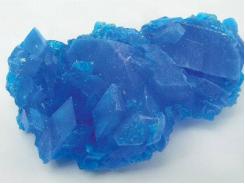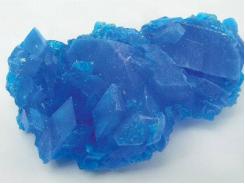How to create a successful piglet feed

Photo by Dreamstime | The success of a piglet feed formulation hinges on regional market demands
The "perfect" formula is dictated largely by local conditions, market preferences and production processes.
For many feed companies, a successful piglet feed is considered a strategic product. It is a market axiom that any company that understands the art and science of piglet feeds is one of the market leaders. Indeed, piglet feeds, especially complete pre-starters, are often called "door openers."
On the other hand, a farm-mixed piglet feed remains an elusive goal for many farms, especially those that lack the technical know-how. Instead, they prefer to buy concentrates they can subsequently mix with local cereals to create piglet feeds that resemble those they would buy complete from the market.
Still, despite so many available complete piglet feeds and concentrates, really successful products remain few and always expensive. It is no secret the most frequently tested product in any pig farm, worldwide, is the next "new" piglet feed; one of the many that keep appearing year round in any market.
The subject of piglet nutrition is so challenging that it has kept me motivated for the best part of the last 25 years. As a matter of fact, as a researcher, field nutritionist, consultant and now manufacturer of my own piglet feeds, I have designed, reviewed and tested countless piglet feeds, concentrates and premises. I can attest to the fact that there is no such thing as a single "perfect" piglet feed. Instead, there are many characteristics that, when combined in the right way, can make for a very good product to satisfy the needs of piglets and the goals of nutrition suppliers and pig producers in terms of profitability.
Feed formulations vary by region
Many believe there can be only one ideal formula that can ensure both market success and high piglet acceptance. In reality, there are many good products, which in fact are of very disparate compositions. For example, a successful piglet feed in Great Britain from a top brand did not succeed in Spain because there the primary goal is piglet gut health (as perceived locally in Spain) and not high feed intake (as believed in Great Britain). This is a prime example on how two similar markets can have very different approaches to a similar problem, requiring thus two totally different products.
To continue with real examples, a piglet feed made in the USA could not succeed in Eastern Europe because its basic formulation was too expensive to be manufactured locally. In contrast, a feed made in Ukraine was not accepted in Western Europe because its high barley content could not be accepted by the sales force there.
Even minor formulations changes can make for a big difference in market success when established and successful products are introduced in foreign markets. For example, a piglet feed made for Europe will fail in Southeast Asia because most likely it will not contain the right additives to protect the products against the high temperatures and humidity encountered in the region. In other words, transferring products or exact formulas from market to market, at least in my experience, is rarely met with success. Instead, where an experienced nutritionist is involved and proper changes are made, then the chances of success increase substantially.
On another note, it is an industry belief that good formulas are trade secrets. Indeed, certain aspects remain the exclusive knowledge of manufacturers, but the basic knowledge is currently in the public domain and in the possession of experienced nutritionists. What remains a trade secret is the combination of such knowledge to create specific products that meet local market requirements. Nevertheless, basic piglet formulas can be obtained easily and with minimal cost. Such formulas can then be tested and adapted, even by experienced farm-mixers, but it is always best to discuss such things with a qualified professional.
Ingredient considerations
In my opinion, the balance among cereals and protein sources is the basis for success for any piglet feed. Indeed, the proportion of wheat versus maize, and the level of barley can make a big difference, especially when certain cereals are cooked whilst others remain raw. In addition, the level and form of soybean products play a distinctive role in ensuring piglet gut health. This is indeed an area where a balance between cost and performance must be achieved and as such, most piglet feeds fail in this area.
Equally important is the role of dairy products and especially that of lactose. Here, many fail to appreciate the role of lactose over that of milk protein. In the case of lactose levels, it is possible to find very distinctive products from market to market. For example, in Argentina and the USA, a piglet feed with 20 percent lactose is considered a high quality product. In Sweden, however, such product will sell with difficulty, as most products contain no more than 5 to 10 percent lactose. The difference is in the laxative effect of lactose versus the ban on in-feed antibiotics in Sweden. In other markets, where antibiotics are allowed, still lactose levels remain low because dairy products are considered a luxury ingredient. Such is the case, for example, in Russia, Spain, Portugal, and elsewhere, where feed cost continues to override other concerns.
Finally, immunoglobulins, either from animal plasma or hyper-immunized eggs, are one of the most controversial ingredients. Both ingredients are equally effective, albeit plasma is more expensive, but their use remains a topic of contention. For example, in the Great Britain, immunoglobulins are rarely used; perhaps because farm health levels are adequate and high piglet feed intake is ensured via other ways. In contrast, in Brazil and Argentina, animal plasma is considered a must for any product to be marketed; whilst in the European Union, egg-derived immunoglobulins are supplanting the previously dominant role of animal plasma.
Additive successes, failures
Due to heavy marketing and advertisement -- plus the extensive private investment on research at public institutions -- the majority of information that is currently circulating among professionals concerns additives. Indeed, the business of additives is a multi-billion industry that enjoys high margins, but also high risks, as most additives have an exceptional high chance to fail within a few years after they are introduced in a new market. Such was the case of anti-mycotoxin agents in Germany, where they do not enjoy the popularity they have elsewhere.
Granted, certain additives can be absolutely essential and their use is proven beyond a doubt. Such is the case for zinc oxide, phytase and organic acids to name a few. Not all commercial brands of such generic ingredients are equally effective, but such additives require little if any introduction or marketing. In contrast, there is a plethora of products with a promising (or not) background that continuously appear in the market. These products fail on the ground of two shortcomings: pure lack of any biological effect or, most likely, insufficient market education. This is rather unfortunate as many good products remain obscure only because the right marketing strategy is not followed.
Nevertheless, in my experience, any single additive alone cannot guarantee marketing success and high animal performance. Admittedly, certain additives can resolve certain problems (e.g. diarrheas and zinc oxide); whereas others improve animal growth or feed digestibility (e.g. phytate phosphorus and phytase). Their role remains secondary to that of a balanced diet in terms of the basic ingredients: cereals, proteins and milk products.
Evolving nutrient demands
In contrast with pigs of more advanced age, nutrient levels play a rather minor role in piglet feeds. The best example is the case of lysine. For example, most phase-1 piglet feeds contain around 1.5 percent total lysine, certain products contain even up to 1.7 percent total lysine. In contrast, similar products with only 1.3 percent total lysine can be equally successful, assuming other means are utilized to ensure a high feed intake, and thus equal intake of lysine.
As pigs grow older and we pass to subsequent post-weaning diets, the weight of success shifts from ingredients and additives to the right balance of nutrients. First comes the balance among the most important amino acids, which is key to ensuring piglets grow rapidly and efficiently. Next, at the end of the nursery period, assuming the right amino acid balance has been established, the most important aspect becomes the balance between energy and lysine (the first limiting amino acid). Here, in this final phase, piglets consume the most feed, and the correct balance of these two nutrients leads to increased profitability.
Conclusion
As a young nutritionist, I was once told there are no right or wrong piglet formulas; only successful or failed products. Indeed, formulas remain only part of the equation -- significant yet not the only one. And, even after having secured a good working formula, then comes the question of ingredient quality, feed manufacturing, logistics, marketing and, of course, feed management at the level of the pig pen -- assuming, of course, all these are done while archiving sufficient profitability for nutrition suppliers and pig producers. And this is why this subject still captures my interest.
Related news
Tools

Phối trộn thức ăn chăn nuôi

Pha dung dịch thủy canh

Định mức cho tôm ăn

Phối trộn phân bón NPK

Xác định tỷ lệ tôm sống

Chuyển đổi đơn vị phân bón

Xác định công suất sục khí

Chuyển đổi đơn vị tôm

Tính diện tích nhà kính

Tính thể tích ao




 Five possible negative effects of zinc oxide on…
Five possible negative effects of zinc oxide on…  EU authorities may lower piglet feed copper content…
EU authorities may lower piglet feed copper content…